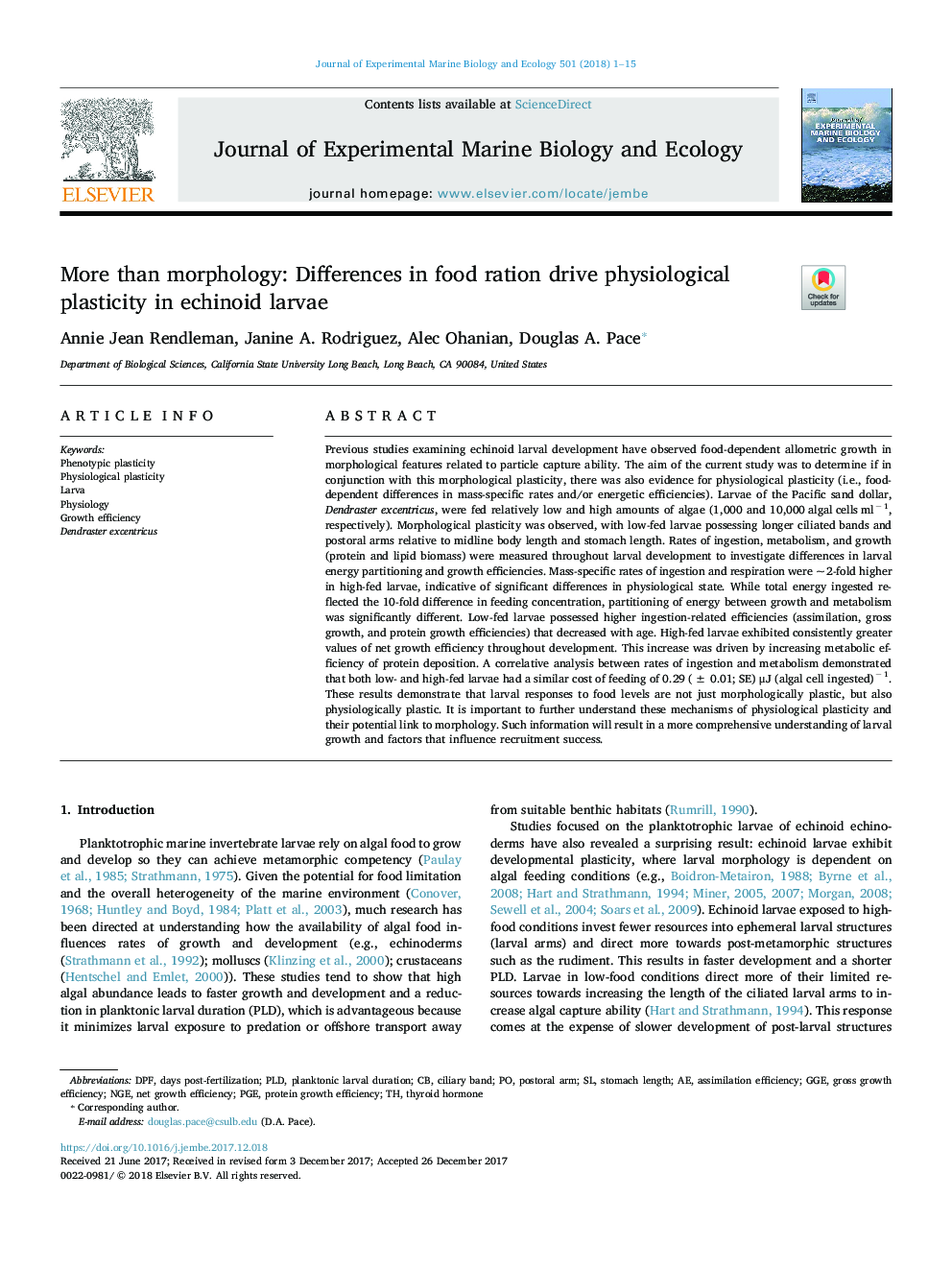| کد مقاله | کد نشریه | سال انتشار | مقاله انگلیسی | نسخه تمام متن |
|---|---|---|---|---|
| 8848974 | 1618374 | 2018 | 15 صفحه PDF | دانلود رایگان |
عنوان انگلیسی مقاله ISI
More than morphology: Differences in food ration drive physiological plasticity in echinoid larvae
ترجمه فارسی عنوان
بیش از مورفولوژی: تفاوت در جیره غذایی باعث ریزش فیزیولوژیکی در لاروهای اکینوید می شود
دانلود مقاله + سفارش ترجمه
دانلود مقاله ISI انگلیسی
رایگان برای ایرانیان
کلمات کلیدی
PLDDPFPGEGGENGEgross growth efficiency - بازده رشد ناخالصGrowth efficiency - راندمان رشدdays post-fertilization - روز پس از لقاحPhysiology - فیزیولوژیLarva - لاروThyroid hormone - هورمون تیروئیدPhenotypic plasticity - پلاستیک فتوتایپیPhysiological plasticity - پلاستیک فیزیولوژیکیAssimilation efficiency - کارآیی Assimilation
موضوعات مرتبط
علوم زیستی و بیوفناوری
علوم کشاورزی و بیولوژیک
علوم آبزیان
چکیده انگلیسی
Previous studies examining echinoid larval development have observed food-dependent allometric growth in morphological features related to particle capture ability. The aim of the current study was to determine if in conjunction with this morphological plasticity, there was also evidence for physiological plasticity (i.e., food-dependent differences in mass-specific rates and/or energetic efficiencies). Larvae of the Pacific sand dollar, Dendraster excentricus, were fed relatively low and high amounts of algae (1,000 and 10,000 algal cells mlâ 1, respectively). Morphological plasticity was observed, with low-fed larvae possessing longer ciliated bands and postoral arms relative to midline body length and stomach length. Rates of ingestion, metabolism, and growth (protein and lipid biomass) were measured throughout larval development to investigate differences in larval energy partitioning and growth efficiencies. Mass-specific rates of ingestion and respiration were ~ 2-fold higher in high-fed larvae, indicative of significant differences in physiological state. While total energy ingested reflected the 10-fold difference in feeding concentration, partitioning of energy between growth and metabolism was significantly different. Low-fed larvae possessed higher ingestion-related efficiencies (assimilation, gross growth, and protein growth efficiencies) that decreased with age. High-fed larvae exhibited consistently greater values of net growth efficiency throughout development. This increase was driven by increasing metabolic efficiency of protein deposition. A correlative analysis between rates of ingestion and metabolism demonstrated that both low- and high-fed larvae had a similar cost of feeding of 0.29 (± 0.01; SE) μJ (algal cell ingested)â 1. These results demonstrate that larval responses to food levels are not just morphologically plastic, but also physiologically plastic. It is important to further understand these mechanisms of physiological plasticity and their potential link to morphology. Such information will result in a more comprehensive understanding of larval growth and factors that influence recruitment success.
ناشر
Database: Elsevier - ScienceDirect (ساینس دایرکت)
Journal: Journal of Experimental Marine Biology and Ecology - Volume 501, April 2018, Pages 1-15
Journal: Journal of Experimental Marine Biology and Ecology - Volume 501, April 2018, Pages 1-15
نویسندگان
Annie Jean Rendleman, Janine A. Rodriguez, Alec Ohanian, Douglas A. Pace,
